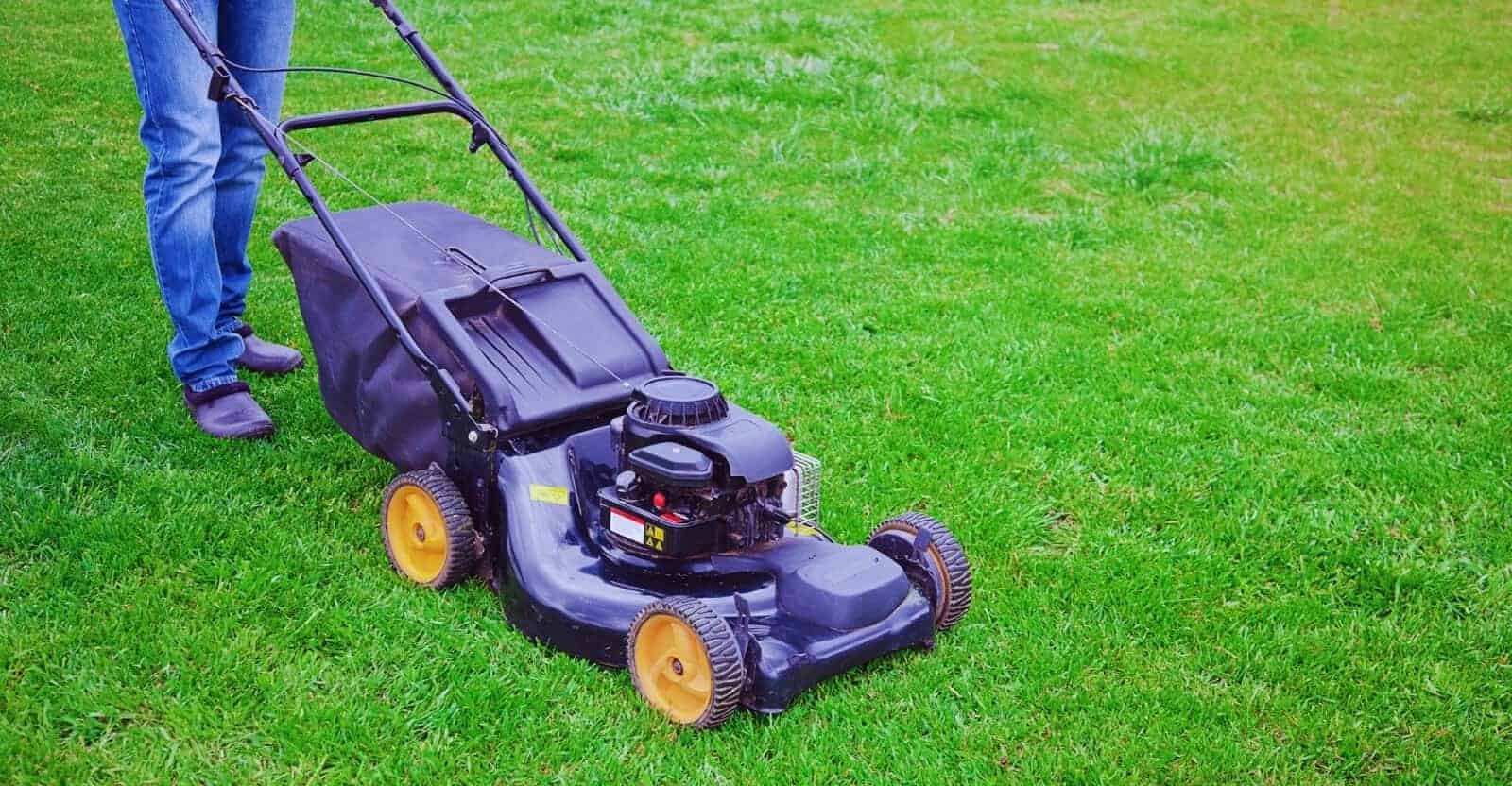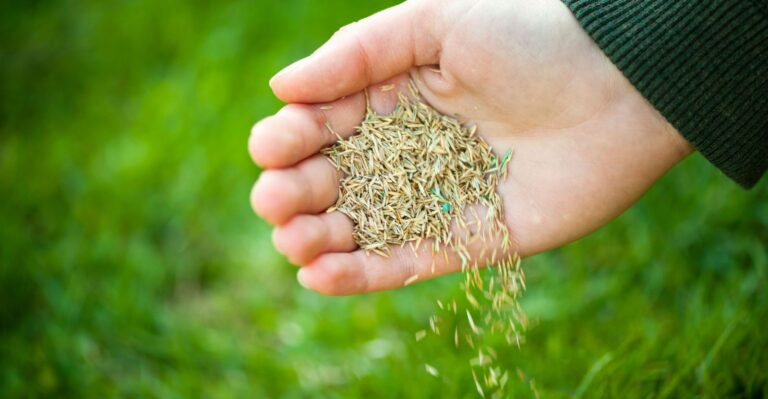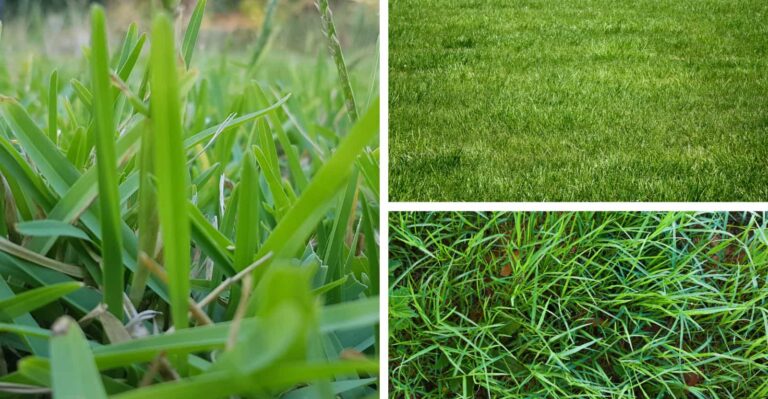Amazon has put together some great Home Gift Deals – save money and get your shopping done at the comfort of your home! Click here to see deals on Amazon
So, you are wondering whether mowing the lawn when it’s wet is a good idea or not. There are so much different information and lots of confusing information on the web that I decided to do research and find the right answer.
To put it simply, mowing a wet lawn is not a good idea. And the reason is that wet grass doesn’t get cut properly.
You can still mow your wet lawn as nothing is stopping you, but it will take longer and more effort. In the end, you may still not get the desired result.
Why Should You Not Mow A Wet Lawn Even If You Could?
Lawnmowers cut the grass through its high-speed spinning blades inside the mower. When mower blades move at a fast speed, it creates a vacuum that lifts the grass. The blade then cut the grass with its strong pull force.
A little bit of moisture and wet grass will work fine without much issue. But if the grass is completely soaked in the water, then it won’t get the proper lift for cutting and will slip through the blade.
Here is a short illustration of how the mower blade cuts through the grass.
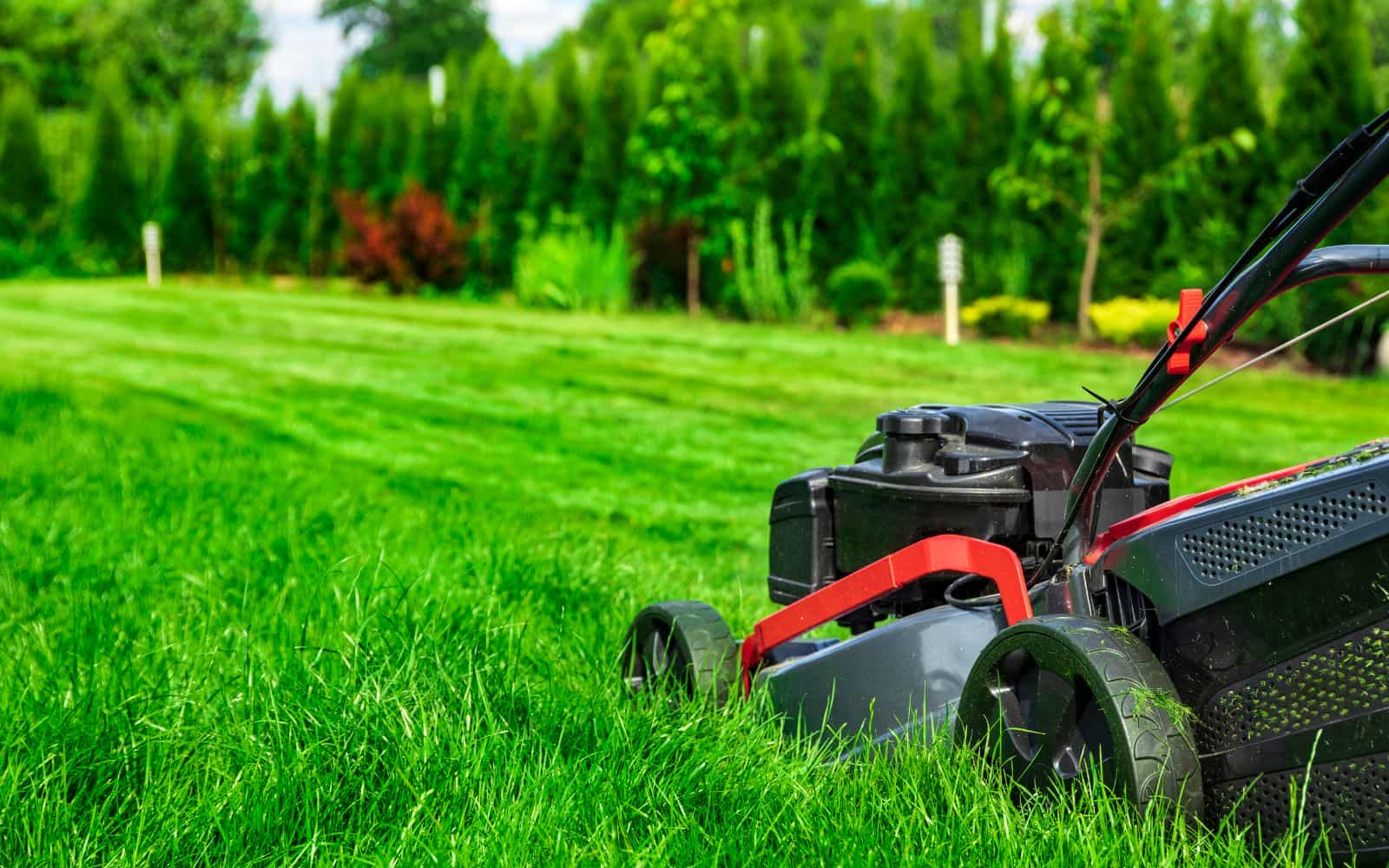
As you can see the grass blades have to be lifted up to get cut. If there is no lifting of grass, the mower won’t cut it.
Can You Cut Grass After It Rains
I found many people asking this question in various gardening forums. To answer it, yes you can cut the grass after it rains as long as the grass is not overly wet.
Inspect the grass blades before you take out the mower. If grass blades are clumped together and are falling on the ground, then don’t mow the grass.
But if the grass is dry and standing straight, then you can try mowing a smaller patch and check the result. If you are satisfied with the cutting wet grass results, then go ahead and mow the rest of the garden.
What Are The Consequences Of Mowing Wet Grass?
Here are some common issues you may face when cutting wet grass.
Non-Uniform Grass Cut
Mowing wet grass increases the chance that you will not get a clean, good uniform cut. The grass will be oddly trimmed, which gives a rugged look to the garden.
Grass Fungal Disease
The uneven cut to the grass increases the risk of spreading the fungus. The fungal growth is expedited with the presence of huge moisture. The uneven cut overexposes the grass to catch fungus.
The problem is exacerbated as the grass clippings get lumped together, which makes a thick layer and covers the ground.
This restricts the airflow into the grass and results in developing “Brown Spots.” The brown spots are caused by a spread of fungus underneath the grass clump.
Harder Mowing
When you mow wet grass, the grass becomes sticky and attaches to the mower, which then blocks the mower blades.
This interrupts the smooth operation of the mower and results in overheating of the engine. For not very powerful mowers, the blade inside the deck may get completely stuck and stop.
This means you have to stop and clear the deck more frequently before you get on to mowing.
Damage To The Lawn
Rainwater softens the ground, and if you attempt to mow, then the blades may start pulling off the grass from the root.
This will completely defeat the purpose of mowing as now you may have to resod the garden.
Surface Ruts
Mowers are heavy, and when you mow it through the wet yard, the grass will get pushed down by mower wheels.
The soft surface due to rain results in the wheel digging deeper into the ground, and when you apply more force to move the mower, it forms the surface ruts which damages the yard.
Damage To The Mower
It doesn’t matter the type of mower you have, mowing wet grass is not a good idea. Water increases the risk of mower parts getting corroded.
Also, the water could seep inside the engine or the fuel tank. The water mixed with gasoline causes the engine to sputter and lower the performance of the mower.
If you are using an electric mower, then mowing in the high moisture, such as after heavy rain, increases the risk of getting it a short circuit. It could cause damage to the mower, or at worse, you may get an electric shock.
Unsafe Mowing
Water makes the ground slippery. This increases the risk of you falling off. The risk of slipping and falling gets largely increased if you are planning to mow at a slope or hill.
First, it may be difficult to push the mower onto the hill slope when the ground is wet. Second, in a worst-case scenario, you may fall on the moving mower, and the high rotating blades may cause serious bodily harm.
Grass Clumping Woes
Cleaning up grass after mowing results in a nice clean look to your yard. Most of the time mulching mower can help you with this tedious task. But if you are mowing the wet grass then don’t count much on mulching mower to do the job.
The mulching mower special shaped blade creates a circular air stream to lift and move the cut grass blades. The wet grass will get clumped very quickly and clog the cutting deck area, which means you have to stop and clean it before you continue mowing.
Bagging the cut grass is another challenge as the water increases the baggage weight and makes it difficult to move.
Big Chlorophyll Mess
Grass has chlorophyll, which gives it a green color. Chlorophyll helps the grass convert sunlight and nutrients into energy. The rain activates the growth compound in the grass, which increases chlorophyll production.
Mowing grass at the peak of its chlorophyll production in a wet environment washes it from the grass. The chlorophyll makes everything get a green stain. Even after you picked and removed clipped grass.
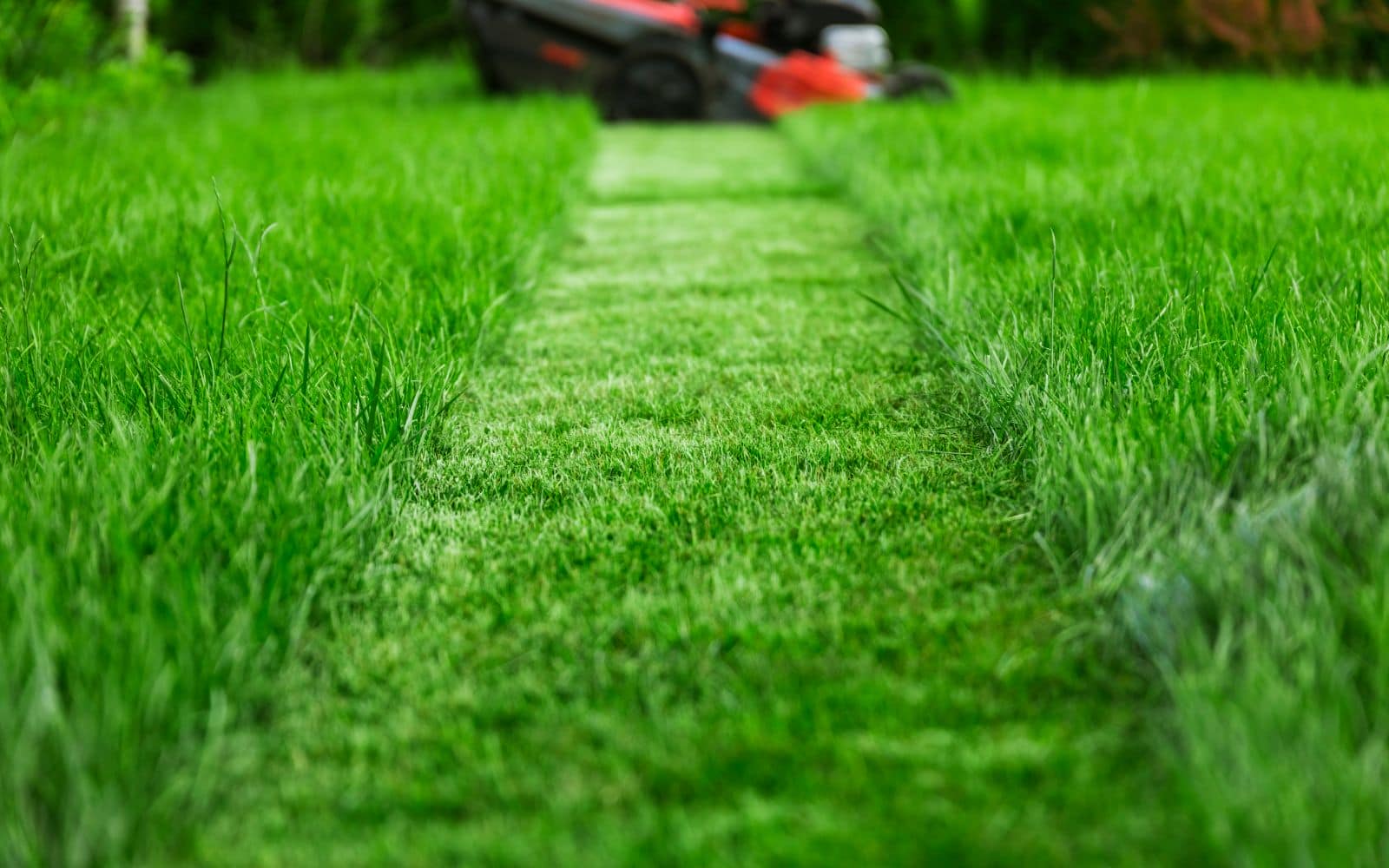
How To Correctly Mow The Wet Grass
If you still want to mow the wet lawn due to some reason, then you can take the following steps to avoid the problem.
Dry The Ground
If you must do the mow, then pick when the grass has the highest chance to be dry. This means schedule it at least a day or two after the rain. This will give the ground a chance to soak any excess water, and the topsoil will not be as soft.
If you have a smaller yard, then you can also consider covering it with some tarp before it rains. It will keep the ground dry. Make sure there is proper water drainage, so it doesn’t overflow your yard.
Prevention is better than cure. As it will be far easier to do the mowing if you don’t have to deal with wet grass, to begin with.
As a reminder, you only need to cut a third or less of the grass blades. So, if you don’t have very long grass then maybe you don’t need to mow at all.
Cutting the grass more than one-third of its length will slow down the grass growth, or you run the risk of getting weed invasion.
Sharpen The Blade
Mowing wet grass with a sharp blade will cut the grass when it comes in contact even if the grass is wet. It will reduce the tearing or pulling of grass, which will give you a smooth cut.
While you are at it, check the blade for any bend or tilting. A straight and balanced blade will be more aerodynamic and help provide a cleaner cut.
Clean The Mower Deck
Make sure your mower deck is clean and free from any grass or dust particles from earlier mowing. The unclean deck will result in more sticking and clumping of the grass when mowing. Clean the mower deck with clean water and spray it with a silicone lubricant.
The silicone lubricants prevent the grass from getting stick to the mower deck and also make it easier to clean afterward.
Raise The Deck
Raising the deck height a bit higher will give you an adequate cut length with a smaller chance of getting the deck clogged.
Keep the deck bit higher at three to five inches long. It will be a reasonable trade-off as you will get a good cut with less hassle.
Empty The Mowing Bag
Frequently emptying the mowing bags or cleaning the mowing deck will reduce the weight on the mower.
It will make mowing a bit easier due to less excess weight on the mower. And the mower will not be sinking into the wet ground. Keep cleaning up any clogging, especially around the mower blade and deck.
Rake The Grass
Raking the grass before you start mowing will lift up the grass and keep the wet grass stand straight. This will help with the easier cutting of the wet grass.
Prevent Moisture In The Fuel
If you are using a gas mower, then the ethanol has a tendency to attract moisture. The higher level of moisture in the gas reduces the motor efficiency, and a very high level may cause the mower to stop.
To prevent this, use a fuel stabilizer when filling up a mower gas and buy fuel in a limited quantity. This will reduce the storing issues during rainy days, which may lead gas to being contaminated with high moisture.
Side Discharge
For highly wet grass, set the mower on the side-discharge mode. The downside of side discharge is that it leaves rows of clippings in the grass. But you can fix it by cross-mowing at 90 degrees.
This is not an ideal situation as you have to manually mulch or bag the cut grass. But it won’t be a huge problem if you can wait a couple of days to bag the grass till it gets dry.
Frequent Mowing
Don’t wait too long for the grass to get larger before you take out the mower. It’s far easier and less hassle to mow shorter grass than the tall one.
Best Lawn Mower For Wet Grass
For mowing wet grass, use a Zero Turn Mower. It provides the most efficient grass cutting, and the lower and flexible deck design allows you more control over the clipping.
Use the following guidelines when using Zero Turn Mower to cut the wet grass.
Check The Ground
Before you bring your heavy mowing machine to the soft rain-soaked yard, check if the ground is dry enough to hold the weight of the mower.
Walk on the grass and test if your feet sink in the ground. If it can’t walk on the lawn without getting stuck, then it means the ground is too soft to mow.
Prepare The Mower
Use the earlier guidelines of sharpening the mower blade, cleaning the deck, and raising the deck heights of the zero-turn mower to reduce issues with mowing.
Strategic Mowing Of The Wet Grass
The wet grass needs some strategic mowing to get effective results. Begin by mowing around the edge of the lawn first. This will allow you to test if you can go further deep.
If the mower starts getting stuck or working too hard, then bring it back to the harder spot. If the ground is still solid, start going in a vertical row from one side of the yard to another.
Try to cover any uncut area in a row. You can do this by reducing the distance between two rows.
Try to do the most cut in the first round, so you don’t damage the grass by going back and forth. For any cornered or obstructed area, clear the area first before mowing.
Keep Mowing Speed In Control
Mowing the wet grass means you have to maximize the mowing area in the least round. Going slow means, you will be able to cover each area properly without having to come back and mow any uncut patches.
Slow speed will also help to get mower tires better traction with the wet ground. Too fast speed may cause tires to slip on the grass, which could damage the lawn.
Avoid Hills And Slopes
If possible, try to avoid mowing at hills and slopes. The wet grass will provide less traction, which may cause the mower to either slide or flip risking injury or damage to the grass as well as you.
Avoid Taking Sharp Turns
By avoiding taking a sharp turn (Stopping and Pivoting at each turn) will reduce the chance of the mower excessively cutting the grass or pulling it out.
Going in a circular round will provide a uniform cutting with minimal damage to the yard.
Cutting Wet Grass With Reel Mower
If you are using a reel mower to cut the wet grass, then be prepared to burn some calories.
However, the benefit of a reel mower is that it will be less damaging to your lawn. Make sure the reel mower blades are sharp and change the mowing pattern as you mow around.
Mowing, in a particular pattern, leaves marks on the ground, which may slightly change the contour of the land.
Sharpen the blades of the reel mower as it will make the job easier. Mow in angular directions and try to cover as much as the area in the first round.
Adjust the reel mower height beforehand, so it doesn’t make grass shorter than 3 inches. A shorter grass grows slowly and gets lots of other problems.
Blow out the wet reel mower for any grass or dirt before you go for mowing. It will drastically improve the cutting of wet grass.
Mower Won’t Start After Mowing Wet Grass
This is a very common problem which many people have after mowing the wet grass. If you’re using a gas-powered mower, which you should, as an electrical-based mower risk getting a short circuit in the rain, then check the fuel tank first.
The high moisture level in the gasoline causes the fuel not to burn properly and will not fire up in the engine’s combustion chamber. Empty the fuel tank and leave the mower out in the sunlight to get the fuel tank completely dry.
Try using different fuels. Most of the time that should start the mower. If it still does not work, then check the spark plug to see if it is working properly.
Also, check if there is any damage to the mower or whether dirt particles blocking the exhaust pipe or the air suction outlet.
Most likely, if you follow these steps, you will be able to get back mower working again. But if it still does not turn on then call the repair shop to get it checked.
Conclusion
We don’t recommend that you should mow your lawn in the rain or overly wet grass. It is not very effective mowing, and it may damage your lawn or mower for various reasons.
But if you must mow the wet grass, then follow the above safety precautions. Keep the mower blade sharp and regularly remove the dirt and clumped grass clogs from the mower.
At last, keep an eye on the weather forecast. If you have been putting off your yard work and there is a forecast of rain then mow it before it rains.
Do you want a lush green beautiful yard that is easy to maintain? Click here to read more about it.
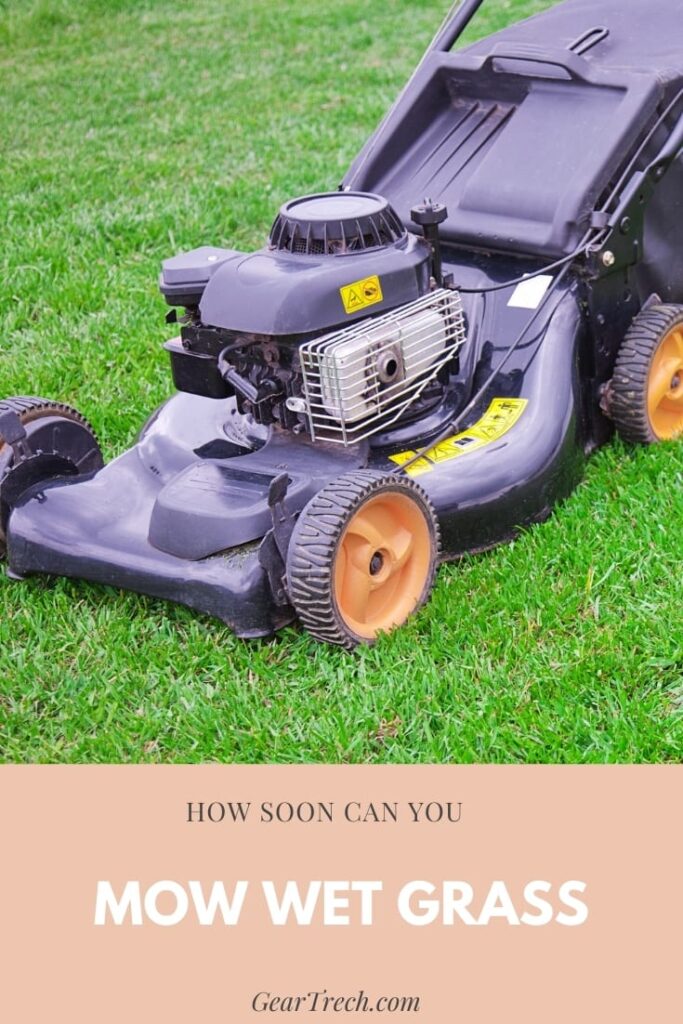
Don’t forget to share this post

